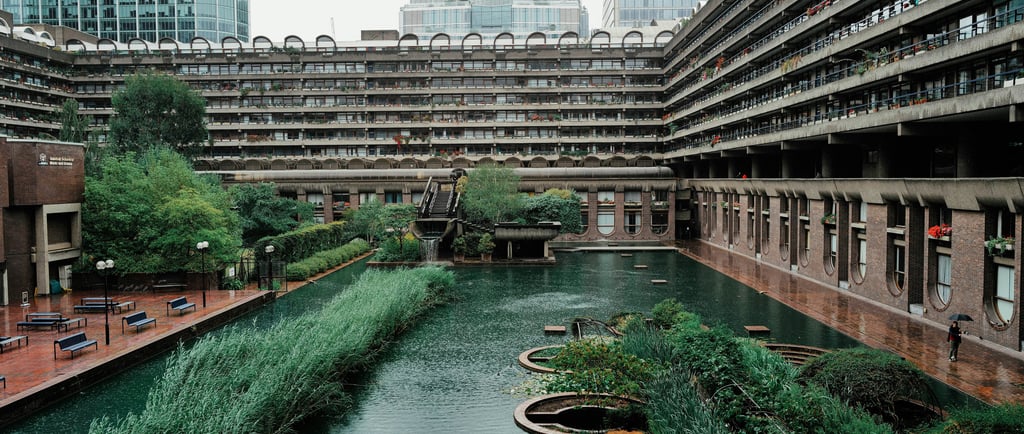🏛️ Brutalist Architecture: Why This Bold Style Is Making a Strong Comeback
Once dismissed as cold and harsh, brutalist architecture is now being rediscovered — and even celebrated — by a new generation of designers, architects, and homeowners. With its dramatic forms, raw materials, and unapologetic honesty, brutalism isn’t just a style — it’s a statement.
5/2/20252 min read


✨ What This Post Will Cover
In this article, we explore what defines brutalist architecture, its historical roots, and why it's back in the spotlight. You’ll learn how this controversial style is being reimagined for modern living — from urban buildings to minimalist interiors — and how you can incorporate its essence into your own home or design preferences. This guide is ideal for architecture lovers, students, and anyone curious about bold, expressive design movements.
🧱 What Is Brutalist Architecture?
🏗️ Origin and Definition
Brutalist architecture emerged in the mid-20th century, especially post-WWII, as a response to the need for affordable, functional public buildings. The term comes from the French "béton brut," meaning “raw concrete.”
🎯 Key Characteristics
Massive, block-like structures
Exposed concrete and raw materials
Minimalist, functional design
Repetitive geometric forms
Focus on structure over ornamentation
🧭 Influential Architects
Le Corbusier – pioneer of béton brut and functional design
Paul Rudolph – known for deeply textured concrete facades
Alison and Peter Smithson – believed architecture should reflect real-life social needs
🔄 Why Brutalism Is Trending Again
💡 Aesthetic Boldness in a Minimalist World
In contrast to sleek, polished design trends, brutalism offers texture, weight, and architectural drama. It stands out — and in a world of digital minimalism, that's appealing.
🌱 Sustainable Thinking
The reuse of brutalist buildings is a sustainable practice. Instead of demolishing them, architects are reimagining these structures for modern use — from libraries to boutique hotels.
🏙️ Urban Identity
Brutalist buildings often serve as landmarks. They tell the story of a city’s evolution and add visual interest in concrete-heavy urban settings.
🏠 How to Bring Brutalist Style Into Your Own Home
You don’t need a concrete fortress to embrace brutalism. Here’s how to echo the style in smaller doses:
🪵 1. Use Raw and Honest Materials
Think exposed concrete, unfinished wood, stone, and steel. Avoid glossy finishes — brutalism is all about authenticity.
🎨 2. Choose a Neutral, Earthy Palette
Stick to greys, beiges, whites, and black. Let material textures do the talking instead of bright colors.
🔲 3. Embrace Geometry and Mass
Simple block furniture, square tiles, and thick lines create a sense of “solidness” reminiscent of brutalist design.
🖼️ 4. Combine with Soft Textures
To avoid feeling too cold, pair raw materials with warm lighting, soft textiles, and cozy layering.
📍 Iconic Examples of Brutalist Architecture
🏛️ Barbican Centre – London
A prime example of a brutalist mega-complex that’s now a cultural hub.
🏫 Yale Art and Architecture Building – USA
Paul Rudolph’s masterpiece, bold and intricate in form.
🏠 Marcel Breuer’s Homes
A pioneer in residential brutalism — his homes combined raw power and functionality.
💬 Controversy and Misconceptions
Many associate brutalism with bleakness or authoritarian regimes due to its imposing scale. However, that’s a misunderstanding of its original intent: to build honest, affordable, and lasting public spaces. Brutalism isn’t just concrete — it’s about function before form, truth in materials, and bold architectural expression.
✍️ Final Thoughts: A Style That Dares to Be Different
Brutalist architecture may not be for everyone — but that’s the point. It challenges norms, embraces utility, and stands proud in its raw beauty. Whether you admire it from a distance or bring elements into your own space, brutalism invites us to rethink what beauty in design really means.
© 2025 Dhomehub. All rights reserved.
